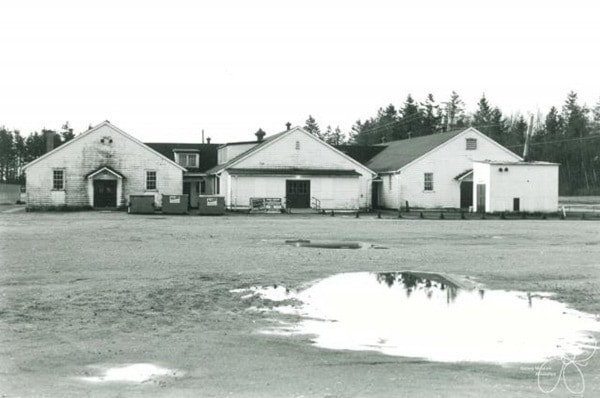Faces, Places and Traces by Mark Rushton
Few people in the Fraser Valley are unaware of Abbotsford Airport. Most are reminded of its presence on a daily basis as WestJet’s 737s cruise overhead carrying passengers to and from YXX.
I see them from my house, vectoring over the Straiton valley in a big S-curve, their landing lights on a cloudy evening creating an ethereal effect.
And it isn’t just WestJet that makes Abbotsford Airport a vibrant aviation hub. Also located there, along with many smaller operations, are Marshall Aerospace, Chinook Helicopters, UFV’s aircraft repair training centre, Coastal Pacific flight school, Conair’s aerial firefighting operation and one of our community’s largest employers, Cascade Aerospace.
Abbotsford Airport now, and into the future, is our city’s economic engine and, as it grows its businesses, will become a significant contributor to our province’s economy.
But it hasn’t always been so.
Its genesis was World War II, when the Canadian government through the RCAF bought the land in 1940 to build a training base for Liberator bomber crews.
By 1943, the airfield was operational, with three runways each measuring 5,100 feet built on a triangle. The base was set up with barracks, mess halls, an armoury and three large hangars.
Just two years later, the war was over and the airport was mothballed, its dormancy only broken in 1948 by the catastrophic flooding of Matsqui Prairie caused by a breach in the Fraser’s dikes. Prairie families were provided with temporary homes in the vacant barracks, and cattle and other livestock from the flooded farms were held there until the floodwaters receded and farms were made viable again.
Following their exodus, the site lapsed back to closure though unofficially it was still considered an optional landing site for Vancouver-bound aircraft when what is now known as YVR was closed due to fog.
But in the mid-’50s, there were more than aircraft wheels burning up the asphalt and concrete; since the runways were essentially closed, the RCAF permitted local drag racers to run their cars in the airstrip.
The noise of those engines must have been an interesting diversion for some new tenants of Abbotsford Airport, for from December 1956 to March 1957 it became the home of 3,000 Hungarian refugees.
The vacant barracks and other wartime facilities at the site were ideal transitional housing until permanent homes and jobs could be found for those families of war-torn Hungary seeking safety and security in this great nation of ours.
Interestingly, like Abbotsford of 60 years ago, there is talk of a currently dormant RCAF facility – Jericho Garrison in Vancouver – being used to provide temporary housing for Syrian refugees coming to British Columbia during the next weeks and months.
A year after the refugees left, the airport was transferred from RCAF control to the federal Department of Transport, the main east-west runway was extended, a traffic control tower built and by 1960 it became a semi-active airport, primarily for air-carriers forced out of Vancouver International due to fog.
It didn’t take long for local pilots and aviation buffs to become active, and by 1962 the Abbotsford Air Show was born through the efforts of Abbotsford Flying Club members and the local Rotary Club.
The airport’s development didn’t really take off until the 1980s, though it has been home to Conair Aviation and its firebombers since 1969.
While the air show still brings throngs to the airport each year, the biggest single event was the 1984 visit by Pope John Paul II when he delivered mass to some 200,000 people.
And if you ever wonder what ten bucks will get you, ask the City of Abbotsford for it took ownership of the airport for that sum in 1997.
Under its direction, through the Abbotsford Airport Authority and with generous help from the provincial government, the 72-year-old airfield is now dynamic both in growth and our community’s future.
markrushton@abbynews.com
